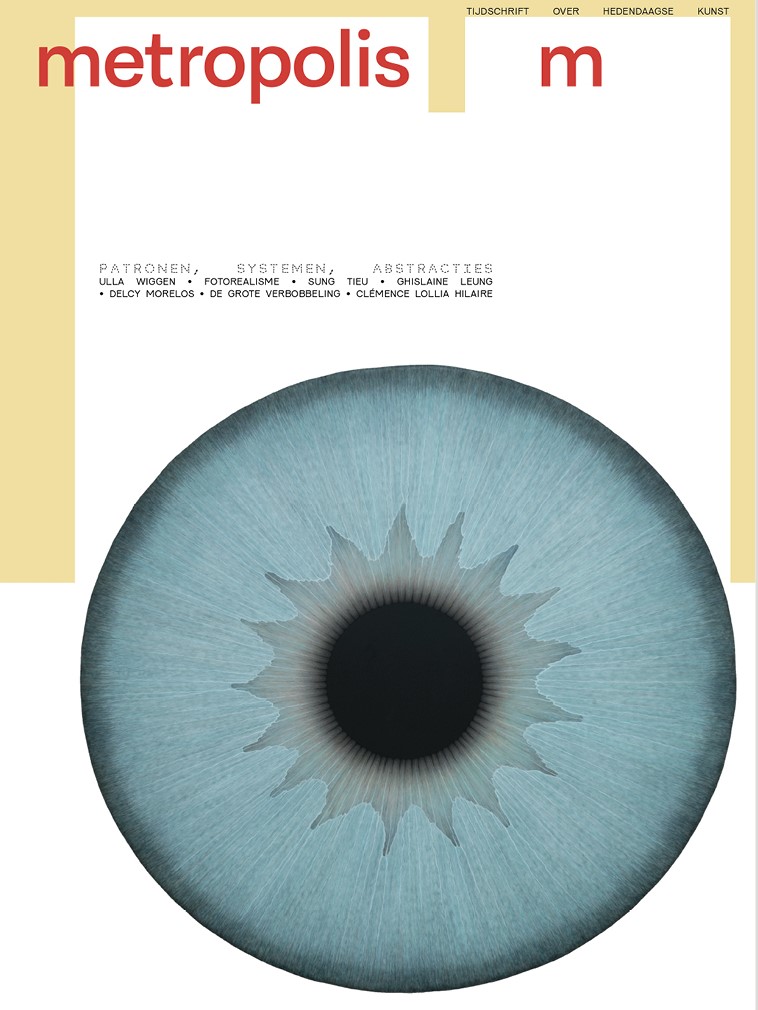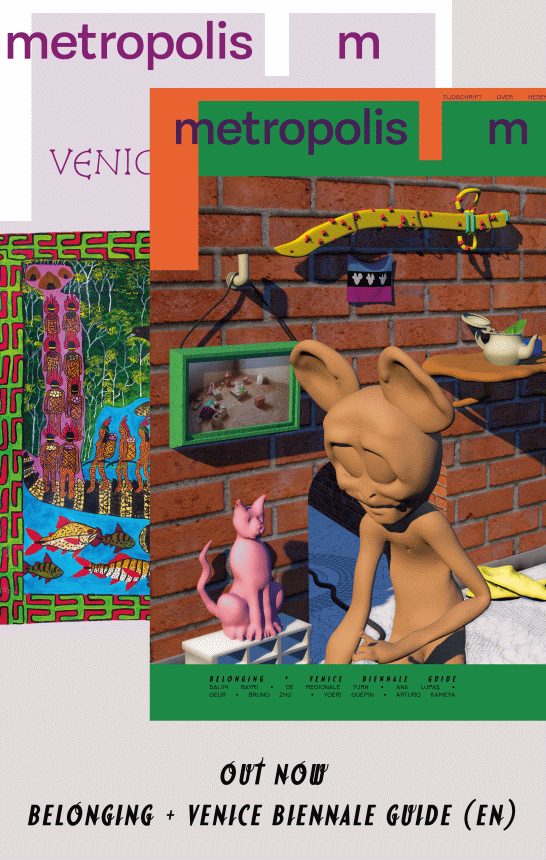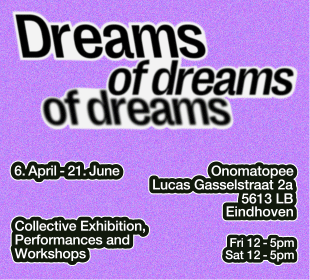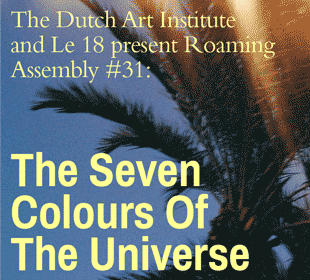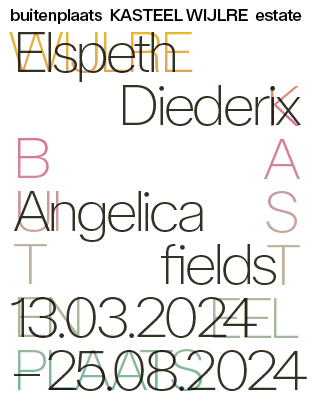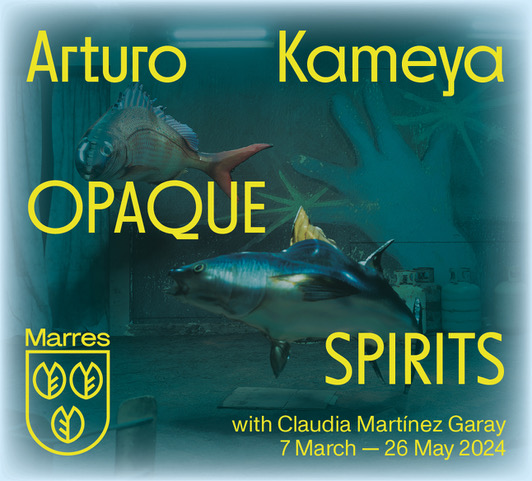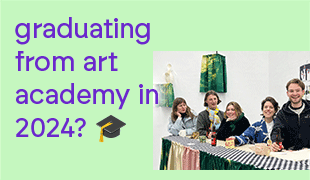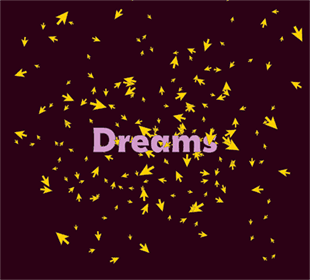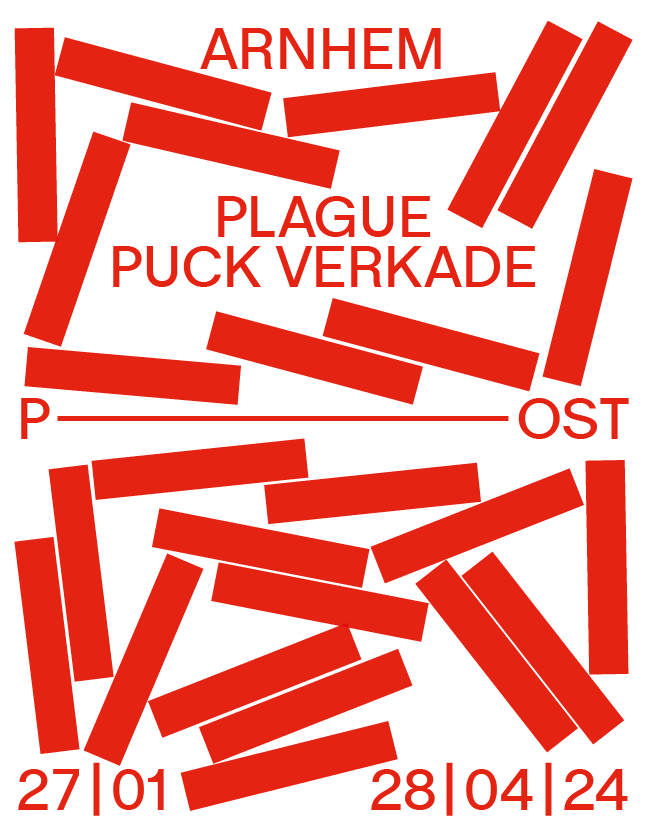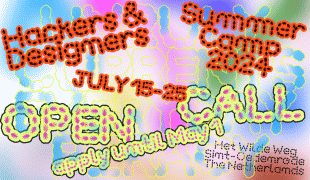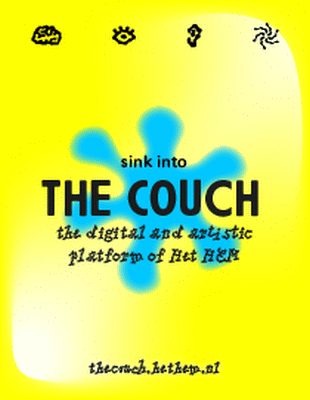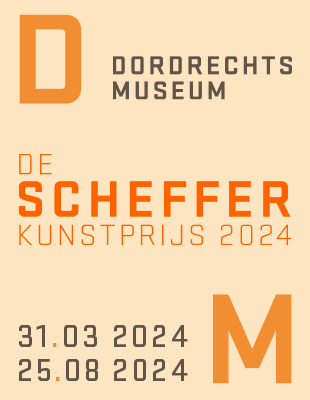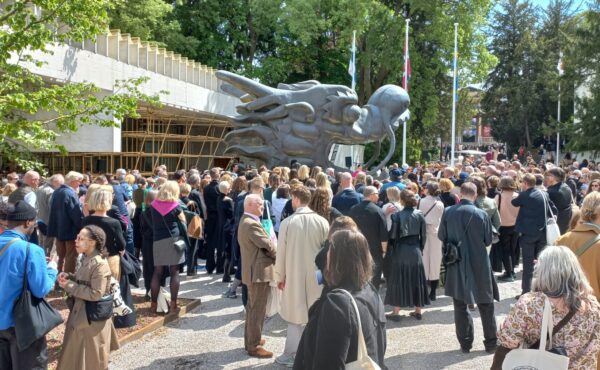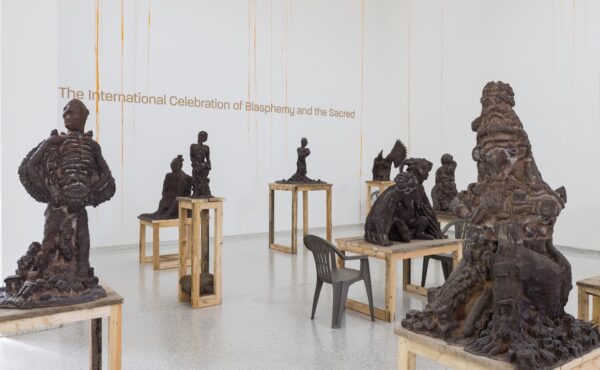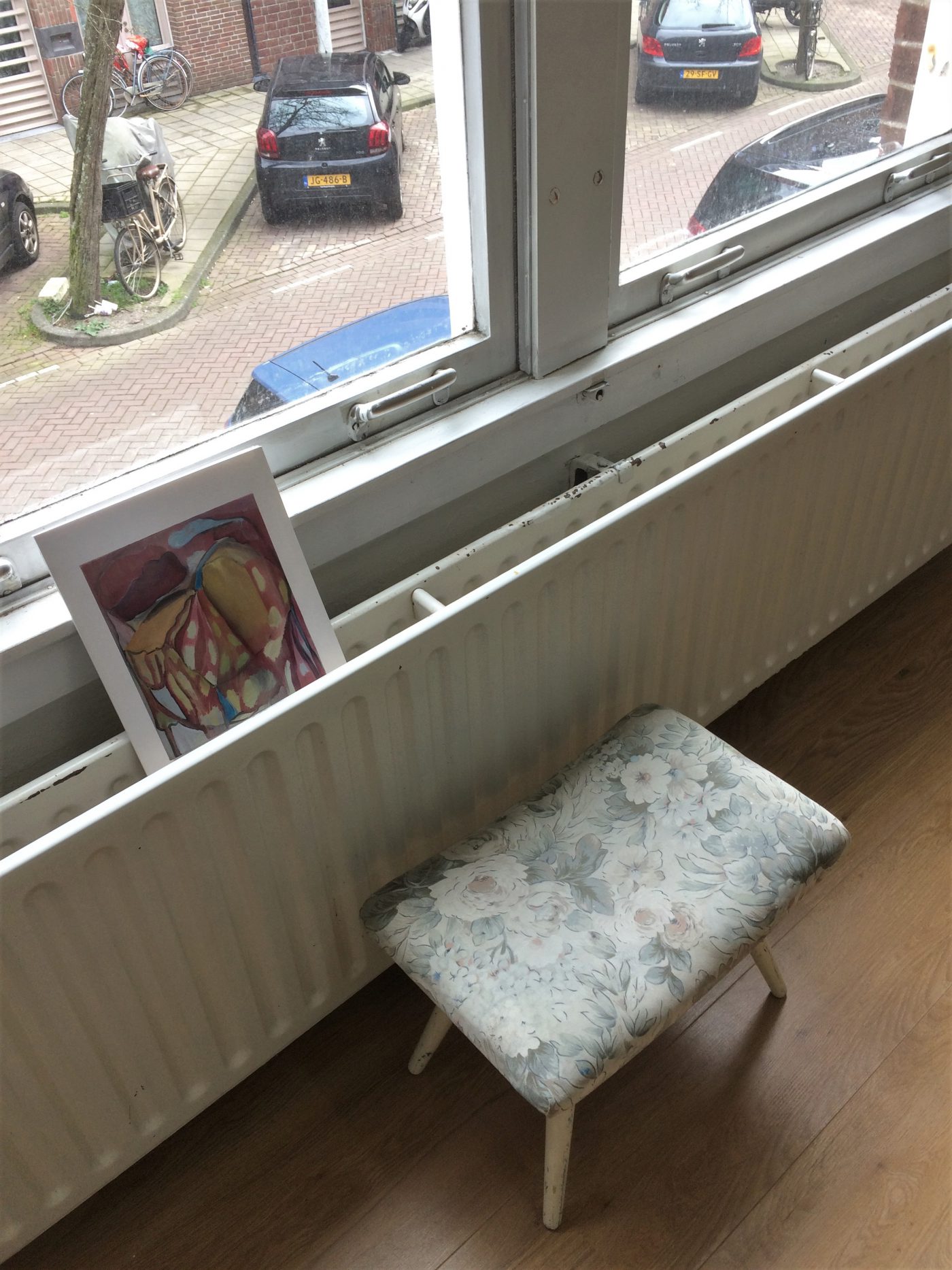
Rezi van Lankveld
Bringing together friends and established artists: passing by Tilde in Amsterdam
By appointment Diego Diez opens the door to his apartment annex exhibition space Tilde. Lotte van Geijn passes by to talk to Diez about his project and to visit Titele, the current show with works by Gabrielė Adomaitytė, Rezi van Lankveld and W. Rossen.
Arriving in a residential area in the east of Amsterdam, nothing seems to be happening. But as I’m parking my bike someone slips out his door and puts a little sticker with ‘T’ on it next to his doorbell. Diego Diez has transformed the living room of his own house into Tilde: an exhibition space that opened in October 2019 and that currently has works by Gabrielė Adomaitytė, Rezi van Lankveld and W. Rossen on view. It is immediately such a joy to be here, and to be able to see the paintings in real life.
Diez grew up in Spain and has lived in different places such as Barcelona, Madrid and Sevilla. As he got more and more interested in art he decided to ask the owners of the restaurant he used to work for as a commercial photographer if they could offer him one free meal per month. He started to share these meals with different artists, curators and collectors. ‘This was my master’s programme in the arts! Even before I went to art-school.’
After some time he moved abroad to study at the Gerrit Rietveld Academie in Amsterdam, where he found a place to live after graduation. Finding himself alone in his new home, he decided to start a new initiative called Tilde.
‘The previous show; The Stichting Egress Foundation Salon, was a recreation of the living room of the late art dealer and curator Seth Siegelaub and his partner, the art historian Marja Bloem. A nice couch was part of the installation and people visiting settled down and stayed over for hours. Tilde is about those encounters. Relationships make up an important part of the shows, especially as it is based in my apartment, the artists also usually stay here for a week to set up. This means the conversations about the show happen more informally, for instance over cooking breakfast.’
[blockquote]’Conversations about the show happen informally, for instance over cooking breakfast’
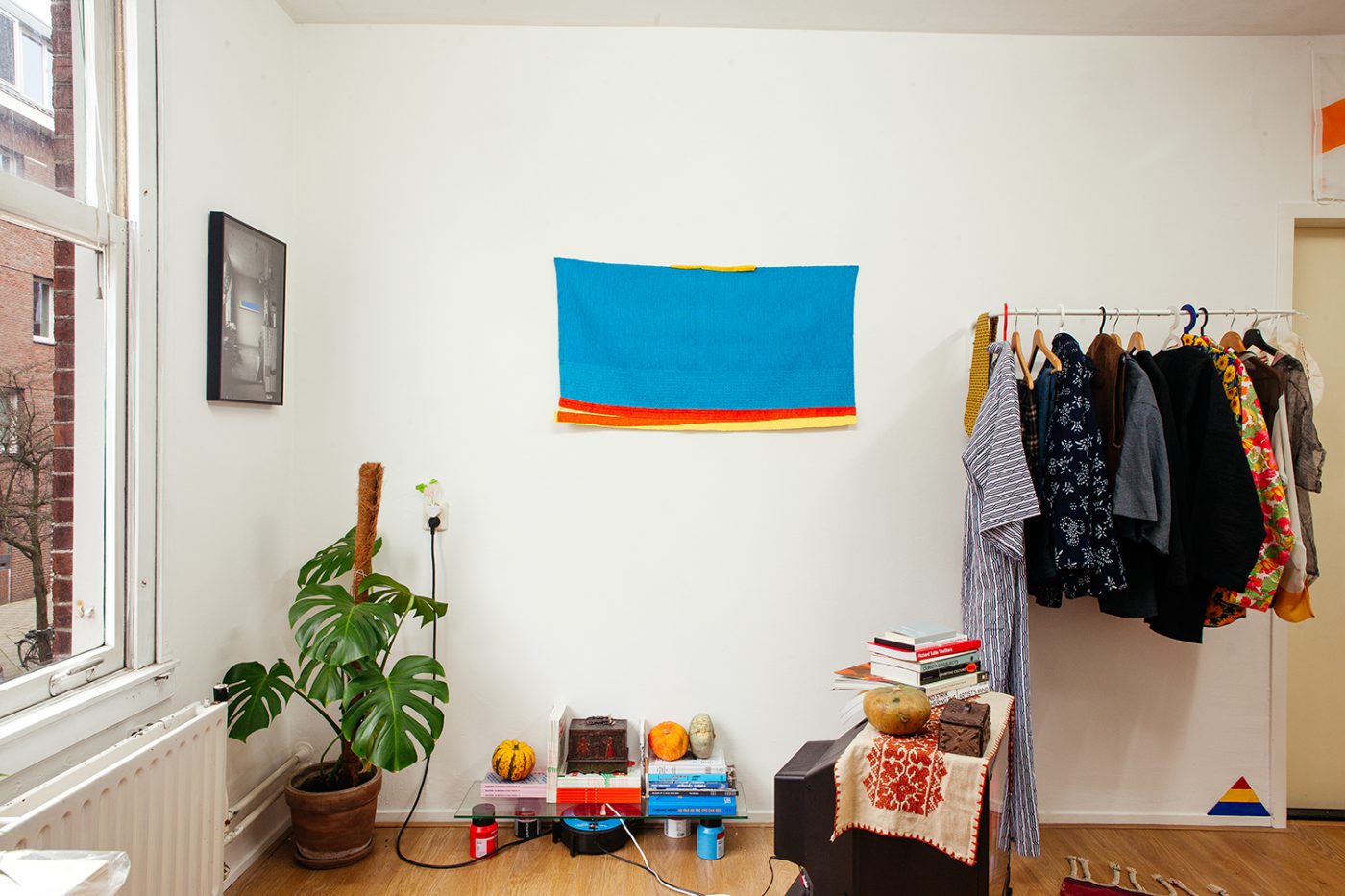
overview Tilde, 'Stichting Egress Foundation Salon', Marja Bloem ~ Hanne Darboven ~ Jan Dibbets ~ Marlene Dumas ~ Lukas Göthman ~ Rini Hurkmans ~ Florence Jung ~ Matilda Kenttä ~ Reinier Lucassen - photo: Diego Diez
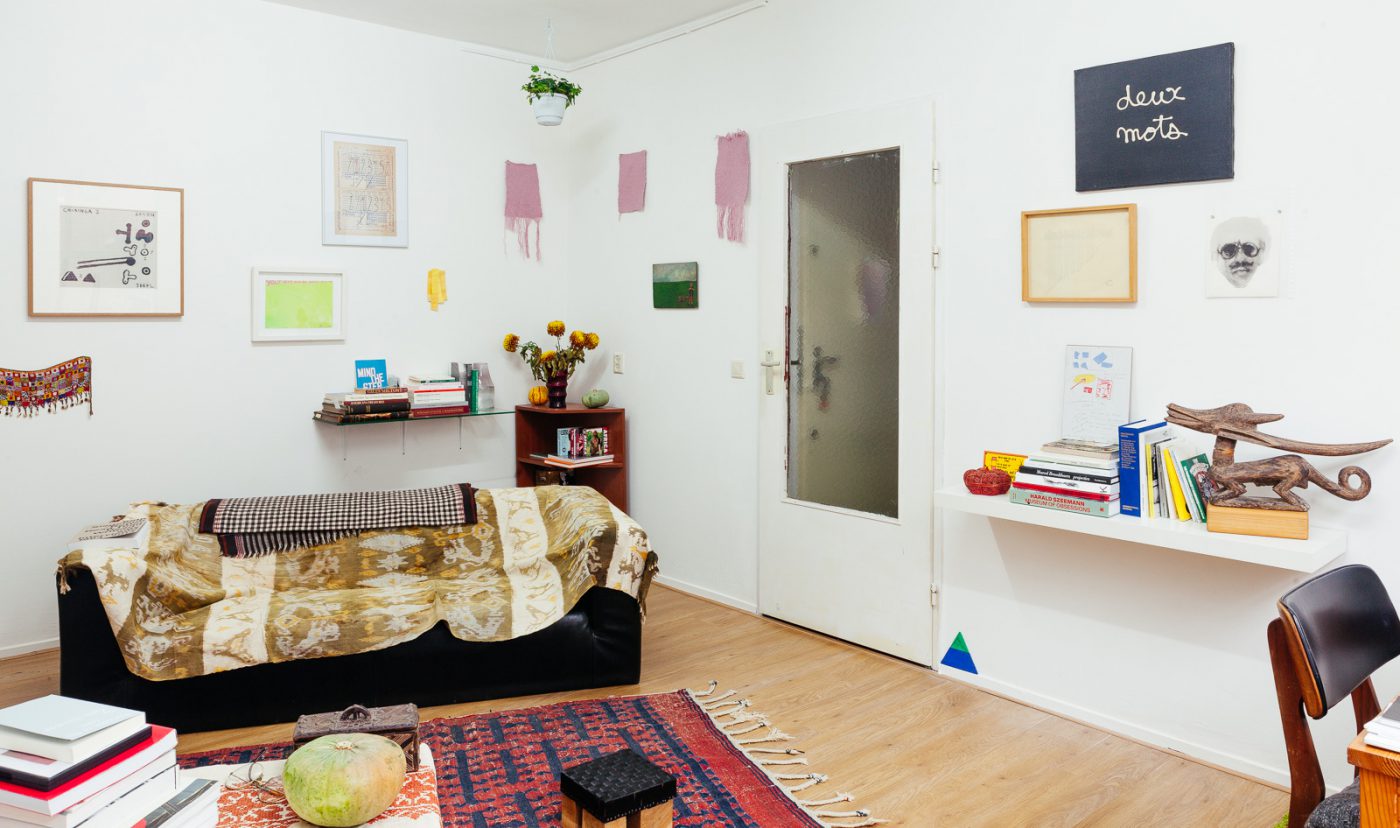
overview Tilde, 'Stichting Egress Foundation Salon', Marja Bloem ~ Hanne Darboven ~ Jan Dibbets ~ Marlene Dumas ~ Lukas Göthman ~ Rini Hurkmans ~ Florence Jung ~ Matilda Kenttä ~ Reinier Lucassen - photo: Diego Diez
For the current exhibition Titele the work of three abstract painters Gabrielė Adomaitytė, Rezi van Lankveld and W. Rossen have been brought together. ‘First I invited more established artists from abroad. But more visitors would come to the shows with works by friends-colleagues. I decided to bring together the best of both worlds. W. Rossen is someone I studied with at the Rietveld and who is a close friend of mine. He introduced me to the work of Rezi van Lankveld, a more well known artist. The painting of Gabrielė Adomaitytė I remembered from her show at the Ateliers two years ago. It made sense to meet up and show their works together.’
The paintings in the show are all made during the pandemic. That way, even though they are not intentionally related, they do seem to share a certain reflection on our current times. Huid & Ruit 1 and Huid & Ruit 2 (2021) are two small paintings by W. Rossen. They offer a palpable opening of a space: details such as keyholes, or the shapes of keys in negative, become fluid. Invisible (2020), a painting across the room, is a work by Rezi van Lankveld. Van Lankveld always places her canvas on the floor when she is casting and painting. ‘I want every part of the painting to be in motion’, she explains in a documentary of her work[1]. Later she questions herself: ‘You only really see what you’ve done when someone else has looked at it. Because at that point you can see it through someone else’s eyes and you realise: oh yes that’s maybe it. That’s why it is actually very important to show the work, and people can see and respond to it. You actually understand it yourself at that point. Perhaps.’

Rezi van Lankveld
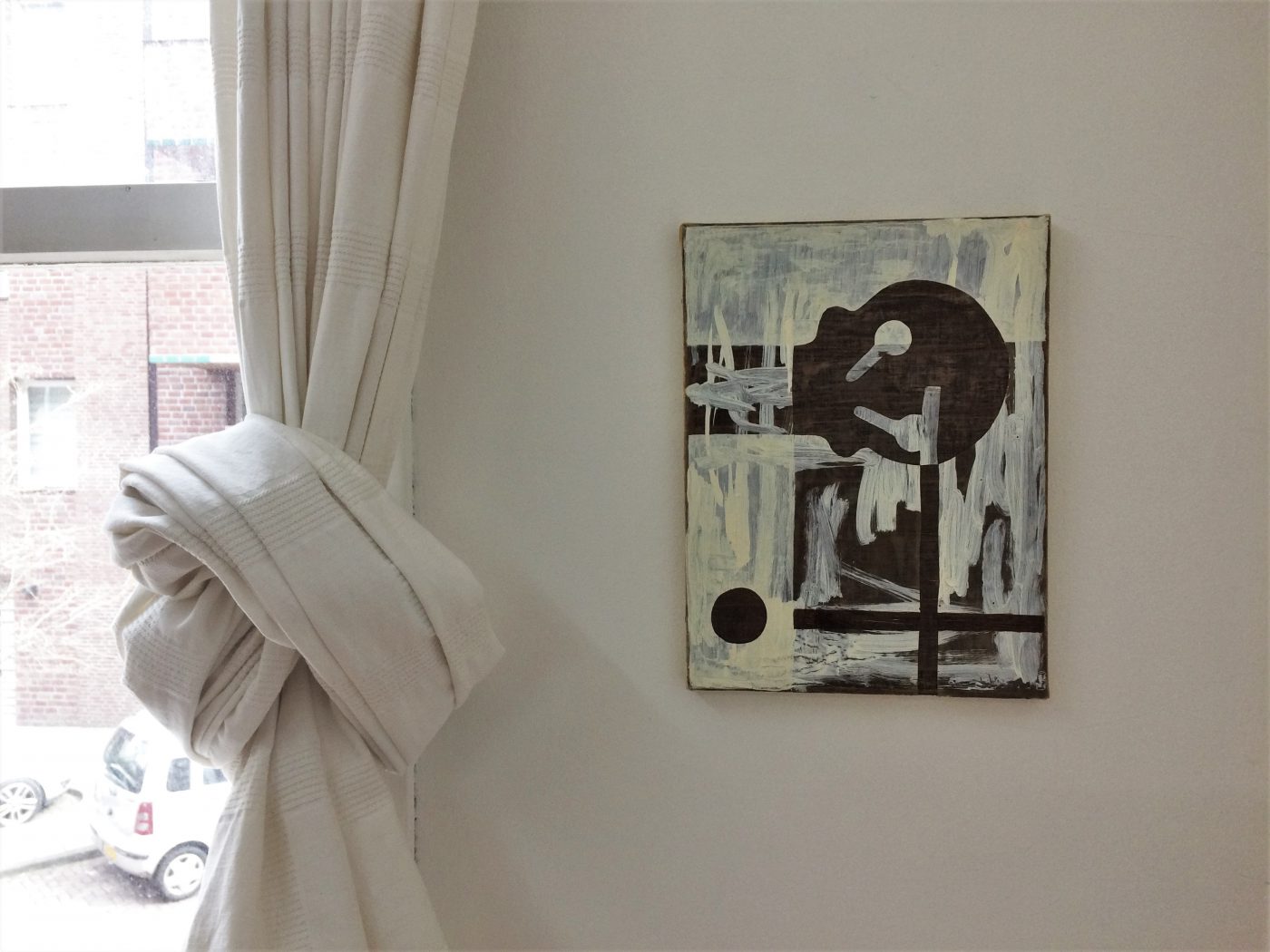
W. Rossen, 2021. Huid & Ruit 2 (detail), ~ acrylic and oil on canvas

Rezi van Lankveld

Gabrielė Adomaitytė, 2020. Effective Split, ~ Oil and acrylics on linen (detail)
Thick layers of paint have made the edges of her painting a bit wobbly. Looking at the work my mind tries to recognize figurative shapes in the abstract paintings. A pink cloud and the green/white-striped curtain behind it can also be seen as a row of trees with pink leaves on top. And what appears to be a two-legged animal at one moment turns into a kind of bodily organ the next. As some things become visible, others disappear, and vice versa.
Suddenly the chair and the two stools installed in the exhibition space seek my attention. They are not placed at random, but are part of the exhibition set-up. Diez: ‘Next to facilitating meetings in the space and organizing the shows, I also add something to each exhibition. This time, I asked the artist to bring chairs from their studios. Can you guess which chair belongs to which artist?’
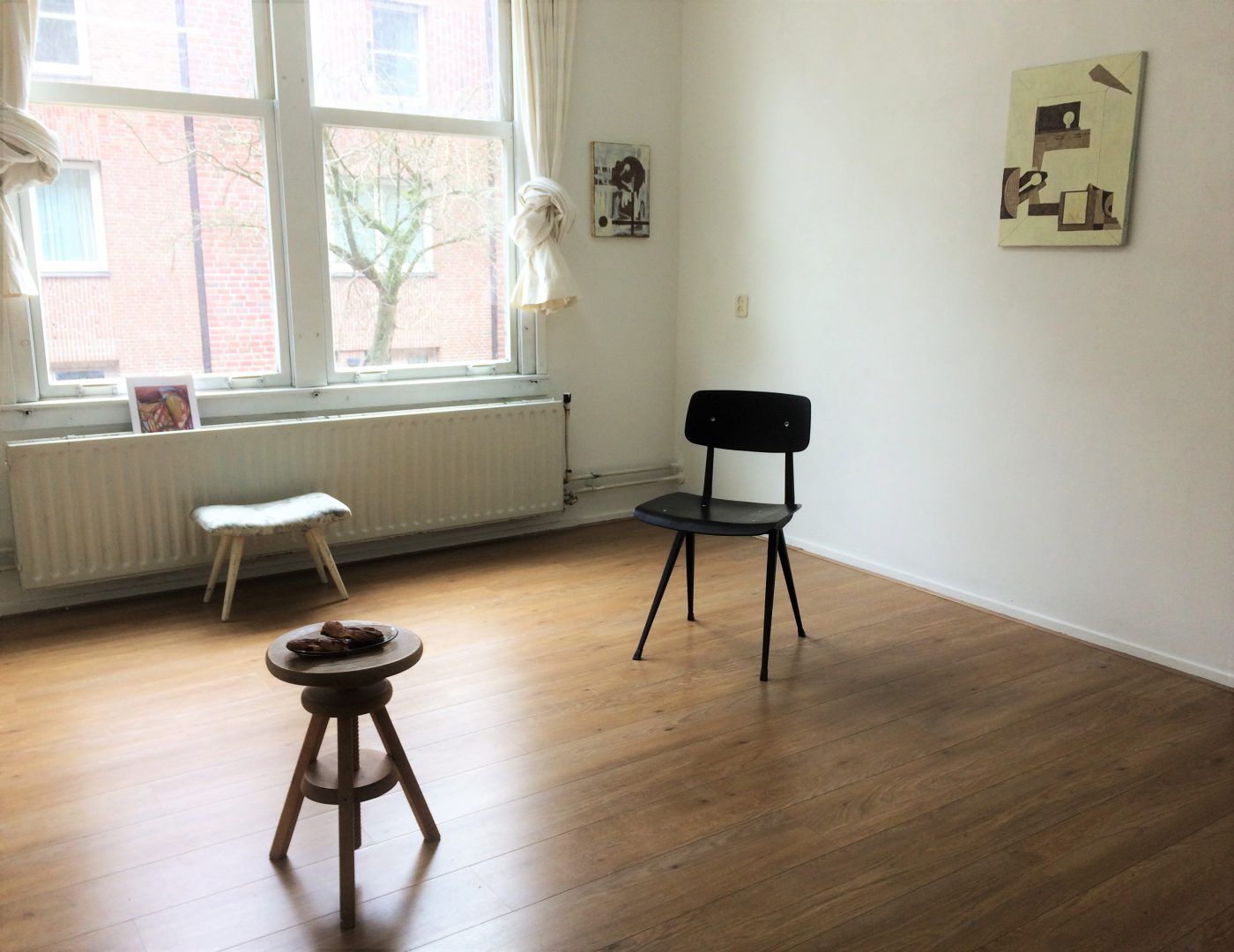
Overview 'Titele' in Tilde
It’s surprisingly easy to guess which chair belongs to whom, and a nice way to get a glimpse of the artists’ ways of living and working. The clean design chair is brought here from Gabrielė Adomaitytė studio. Adomaitytė expresses relief at the ability of visitors to now explore her paintings in real, after having become used to all those digital representations: ‘Painting has acquired many technical advances that have the potential to affect the viewer more than the digital image, since it manages to move the focus from the screen to the more physical experience of an image.’[2]
Diego Diez: ‘The artists’ refusal of deceivingly ‘clear’ images feels to me very close to a rejection of the massive amount of those figurative images we consume nowadays. Abstraction may then be the best way of portraying our current times. However, just like ‘abstract art’, ‘non-figurative art’, ‘non-objective art’, and ‘non-representational art’ are closely related, but not identical terms, these artists also reject clear-cut figuration in different ways.’
Current on display: ‘Titele’, Gabrielė Adomaitytė ~ Rezi van Lankveld ~ W. Rossen, 17th March 2021 ~ 25th April 2021. Tilde is open by appointment, for more info take a look at: https://tilde.space/ and Instagram and Facebook: til.de.ams
Lotte van Geijn
is beeldend kunstenaar en schrijver